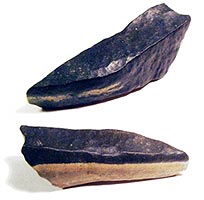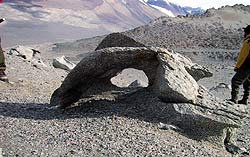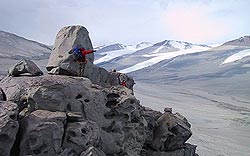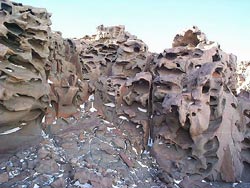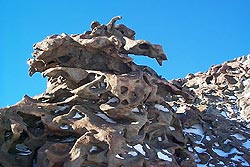WEATHERING OF ROCKS
The Victoria Orogeny is still active, certain sections of the “Great Antarctic Horst” show displaced glacier flow and discordant ice-flow junctions that indicate differential vertical rock movement within the last 10,000 years more or less. However, the summits of some ranges and the interiors of the Dry Valleys have suffered neither ice-abrasion nor rain or cascading water in perhaps 2 million years, perhaps more.read more about Dry Valleys at https://oceanwide-expeditions.com/blog/dry-valleys-unlike-anywhere-else-on-earth
The result is a display of weathered rocks forms like none seen elsewhere on earth, indeed nothing is so remarkable about the last half century of “research” in the Antarctic as the failure of scientists to recognise the many unique features of geology and process displayed before their eyes.
Certain isotopes notably of Be are formed by exposure to cosmic bombardment but none seem to have been carried out on the higher summits. Ages of more than 1 myr have been claimed for, eg the ablation moraine on the surface of the Beacon Glacier, but such moraine is formed by rock-fall from valleys walls of highly different exposure times. However the depth of the typical cavernous weathering found in dolerites increases in proportion to the height above valley floors. Some near the floor of the Wright valleys (as may be seen in “Dry Valleys”) still shows undoubted sign of ice scour and polish. As we ascend the mountain sides, hollows and caverns in the rock become deeper until quite grotesque rock forms are seen.
This is a section we would hope to add more to as more precise dating become available.
Rock may be altered and lie in crumbling flakes, but in almost vertical sill faces, while cracked (presumably by ice formation) the dolerite stands as towers 50 – 100ft high, separated from the parental massive rocks but quite fresh, at a depth of only a few mm, no sign of chemical alteration may be seen.

